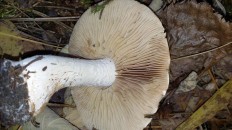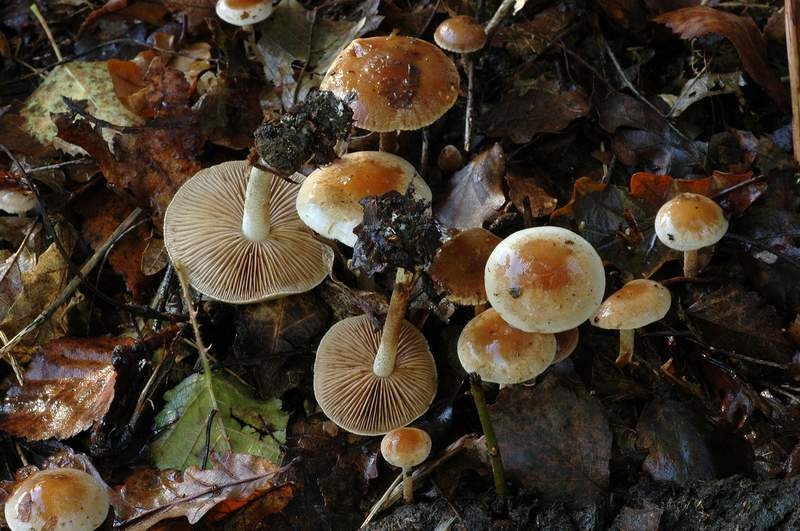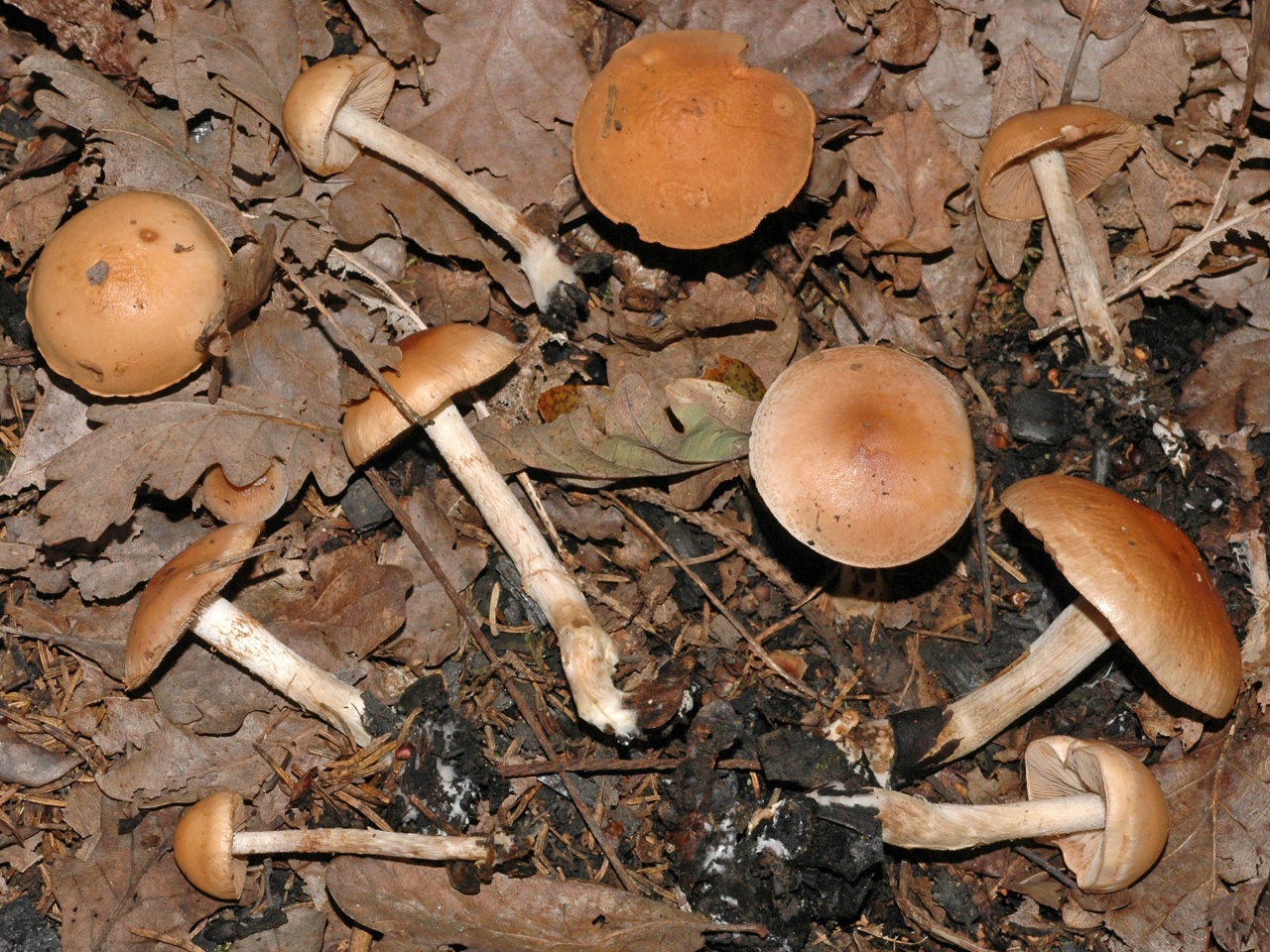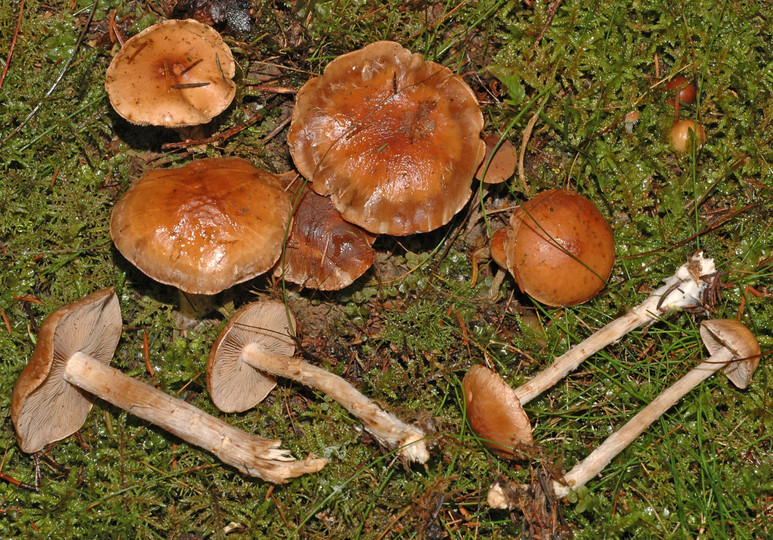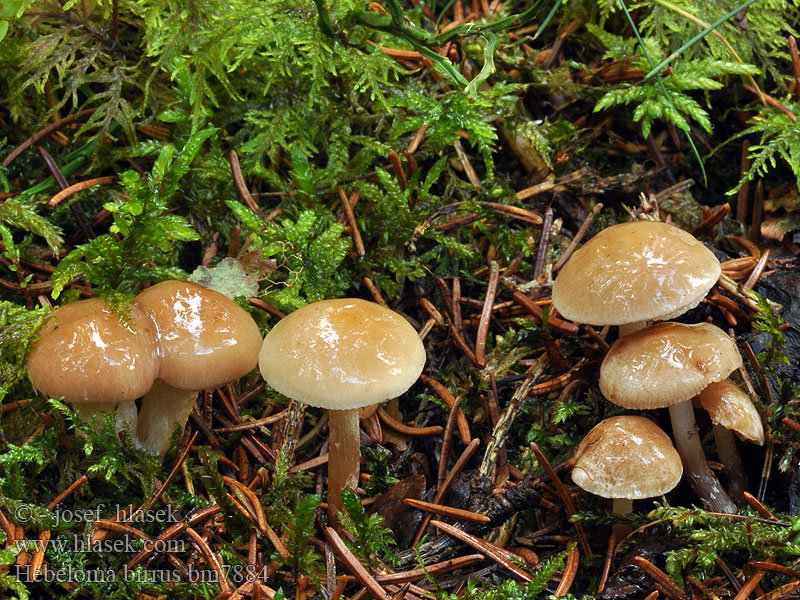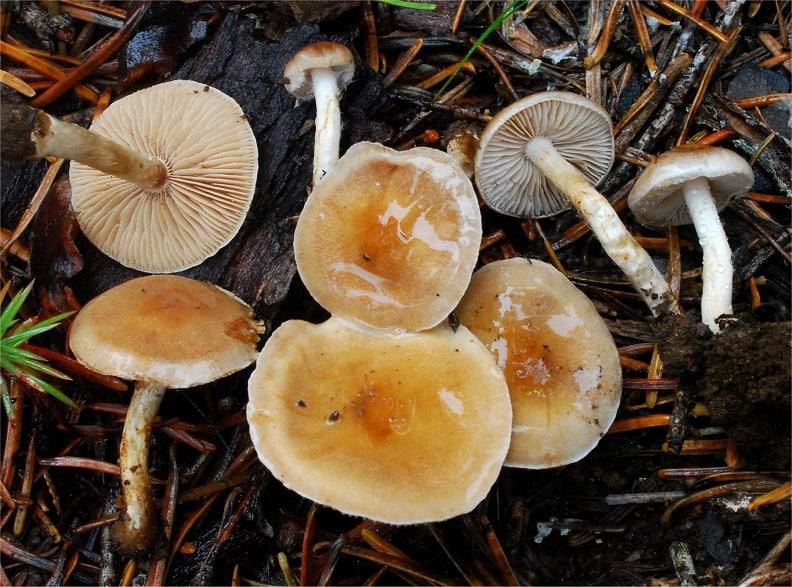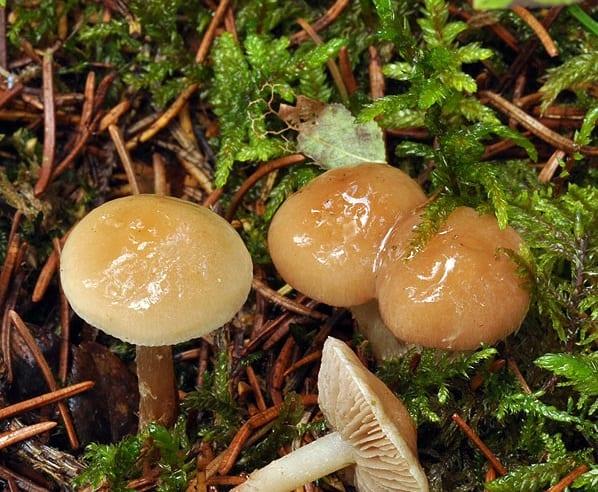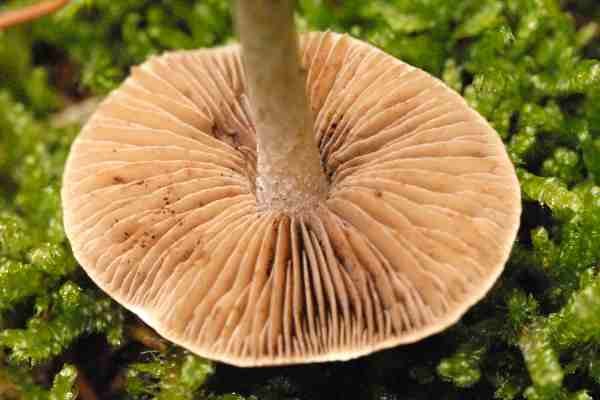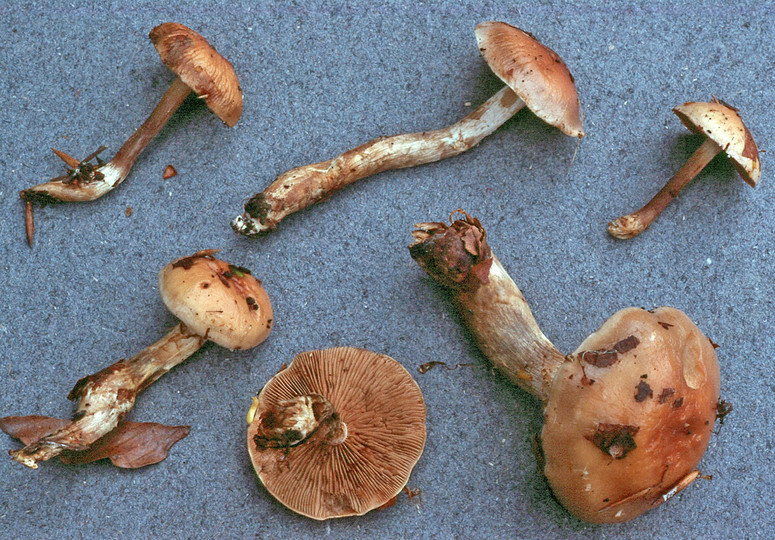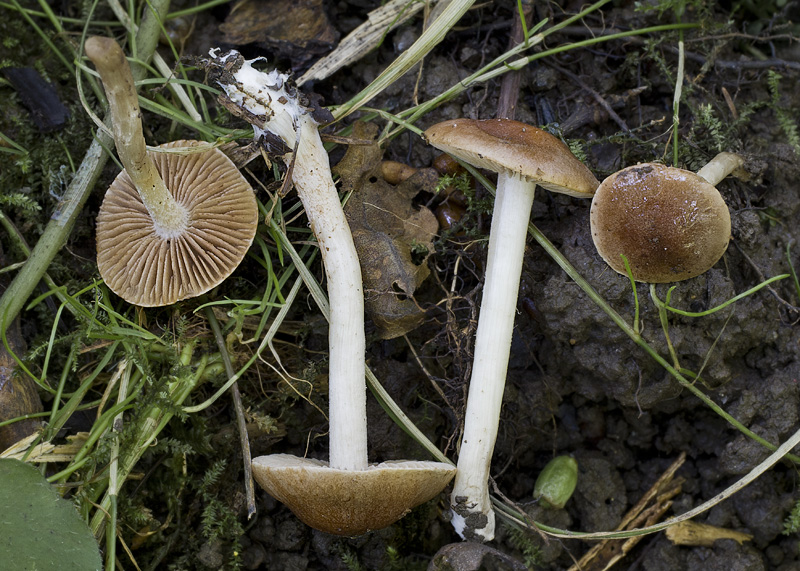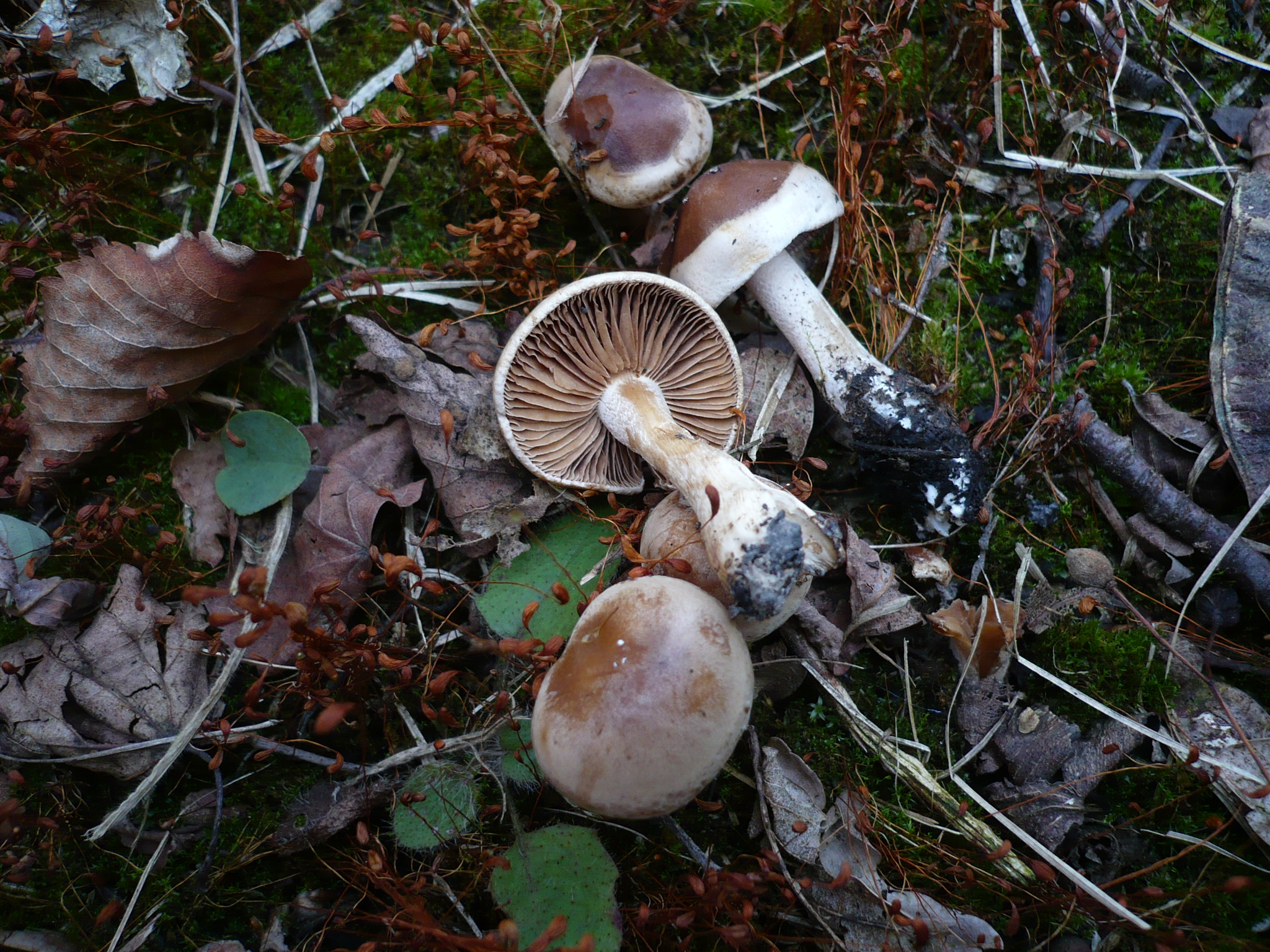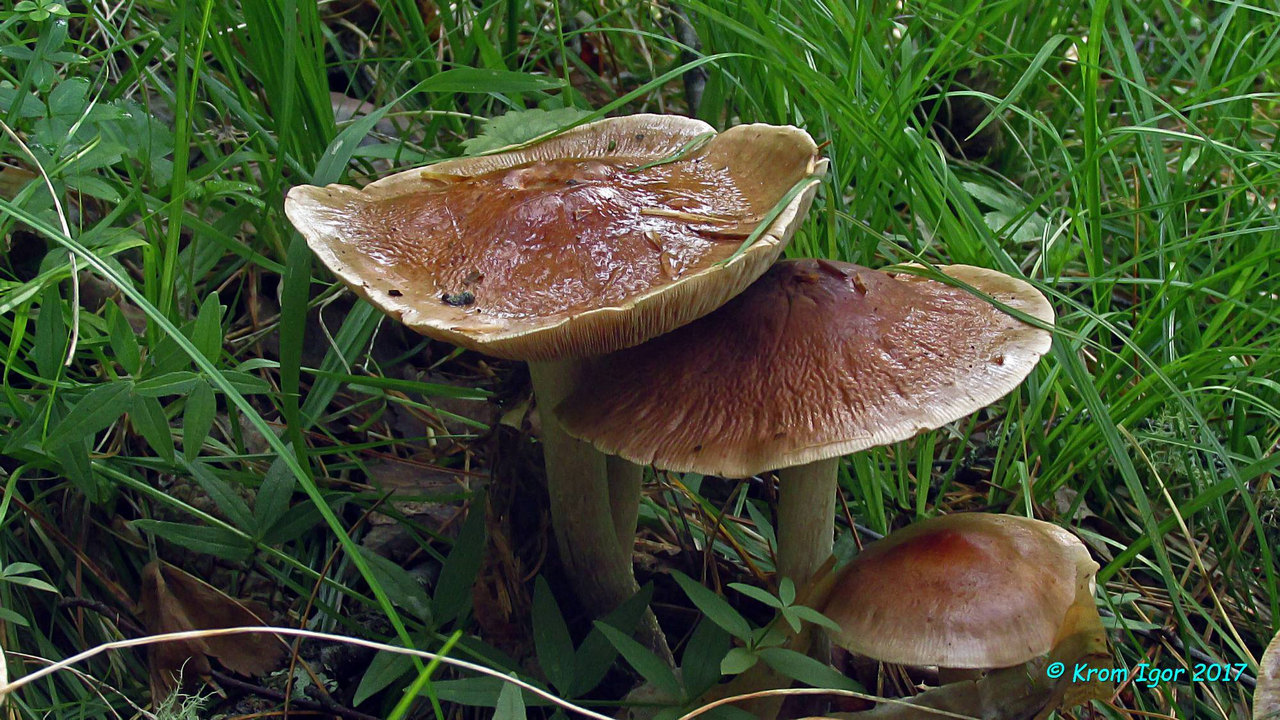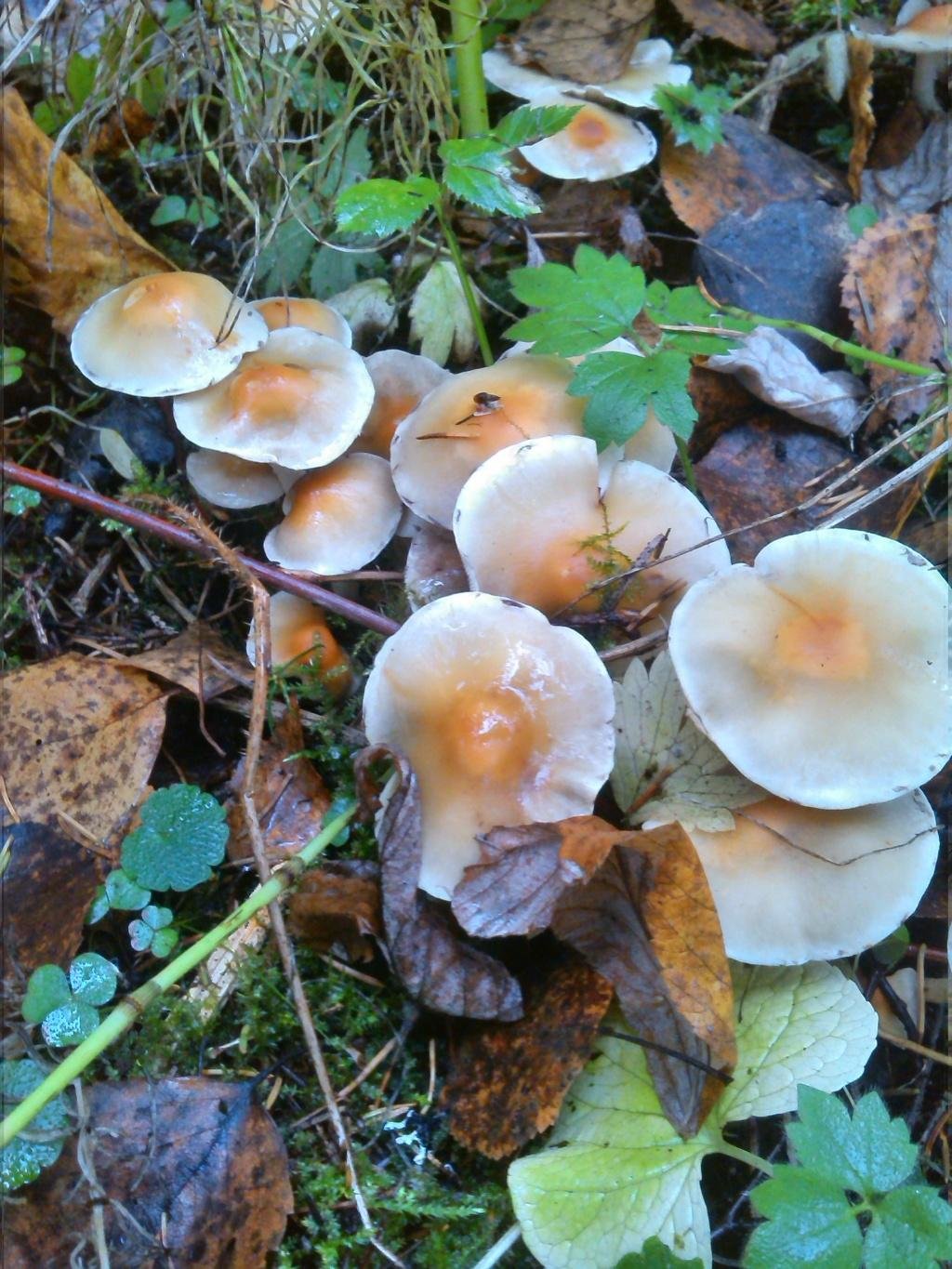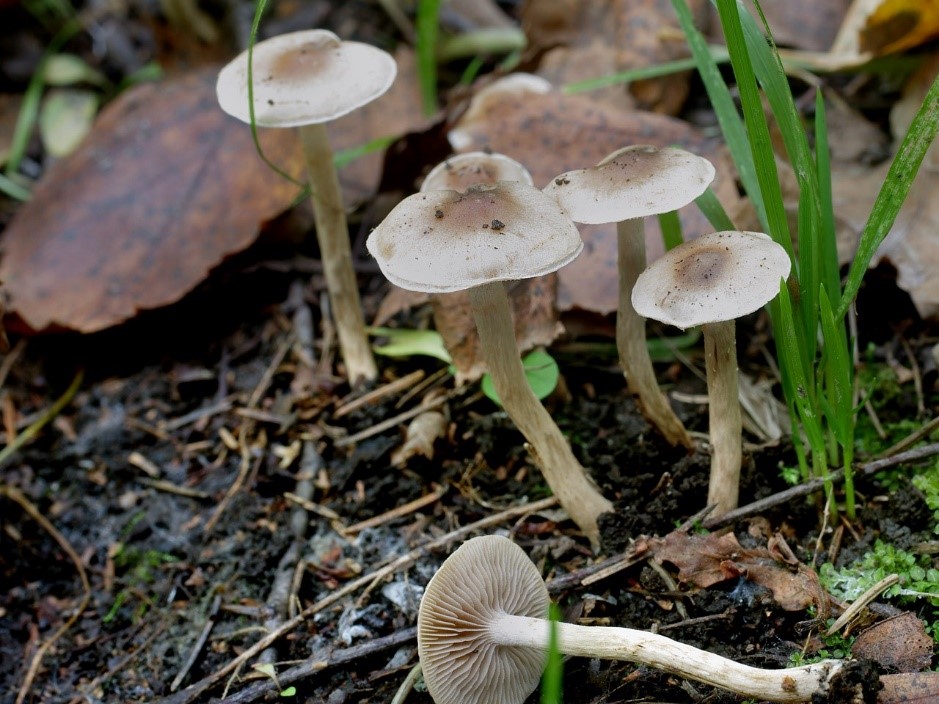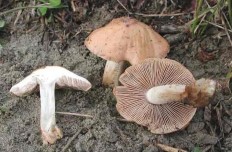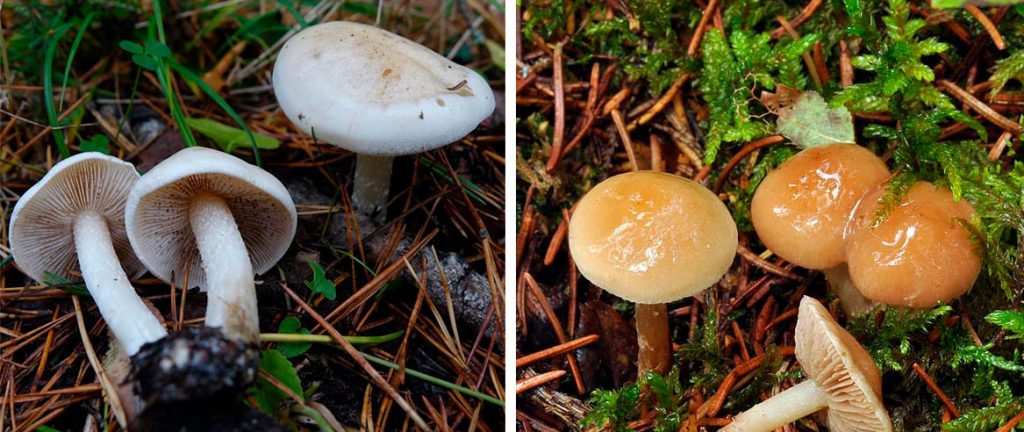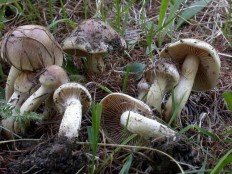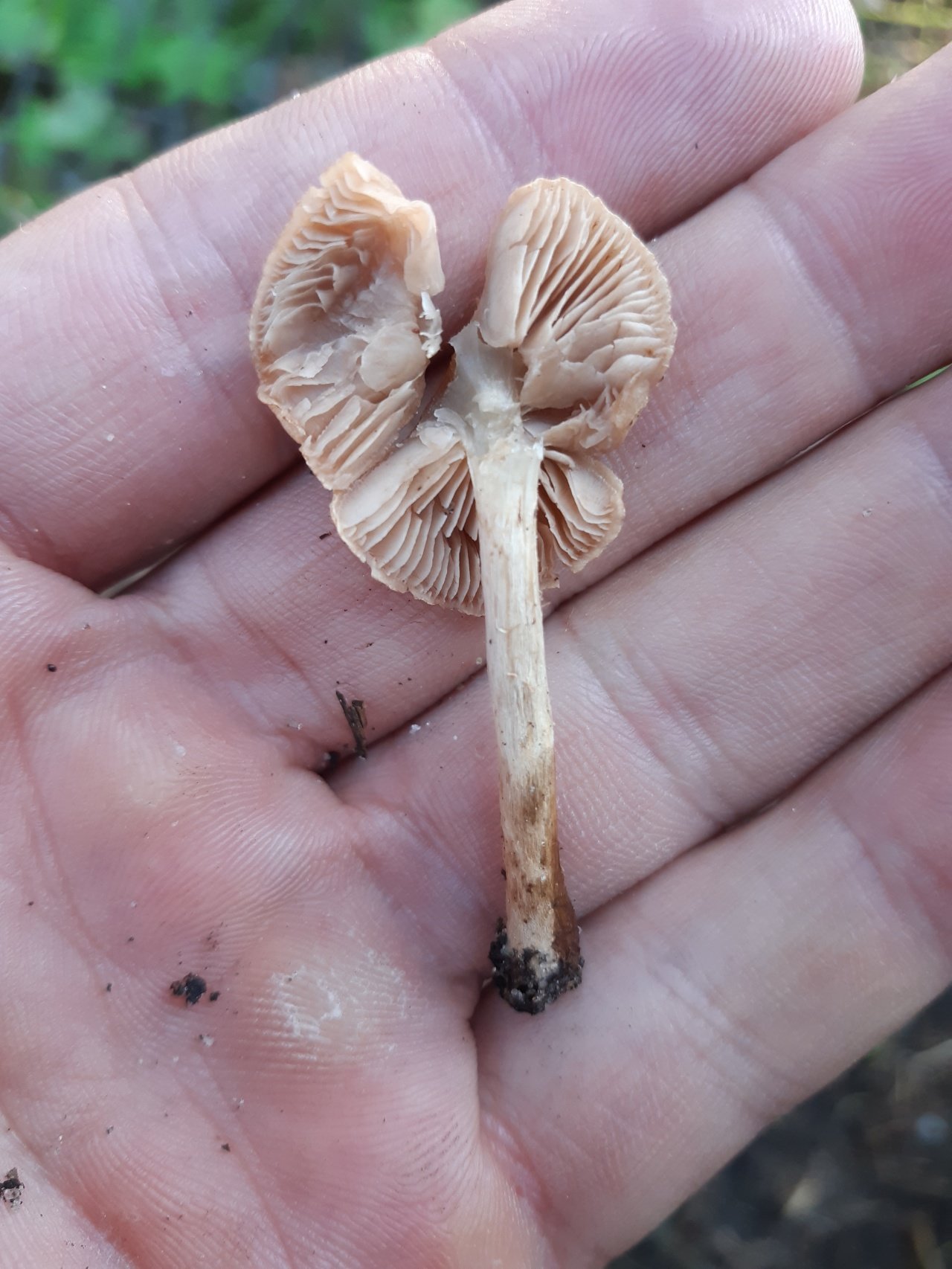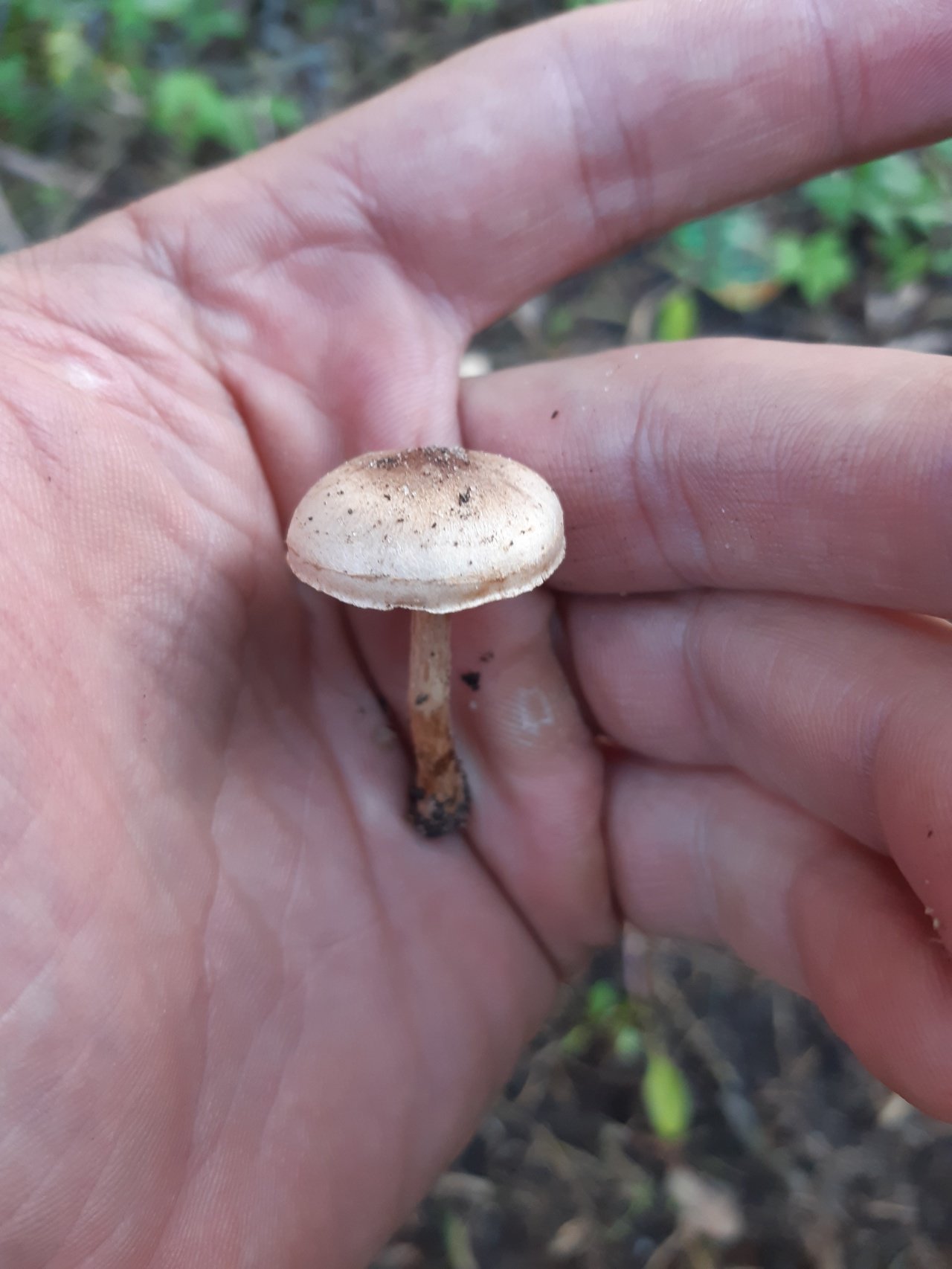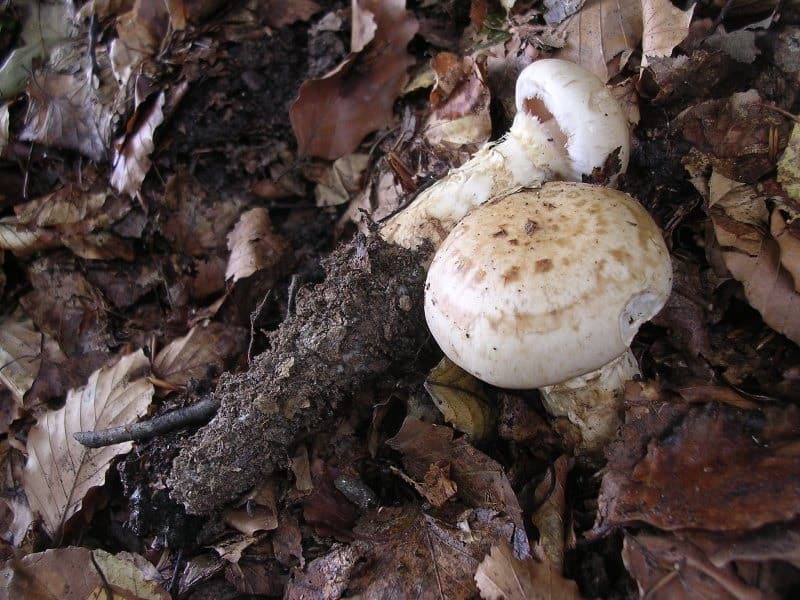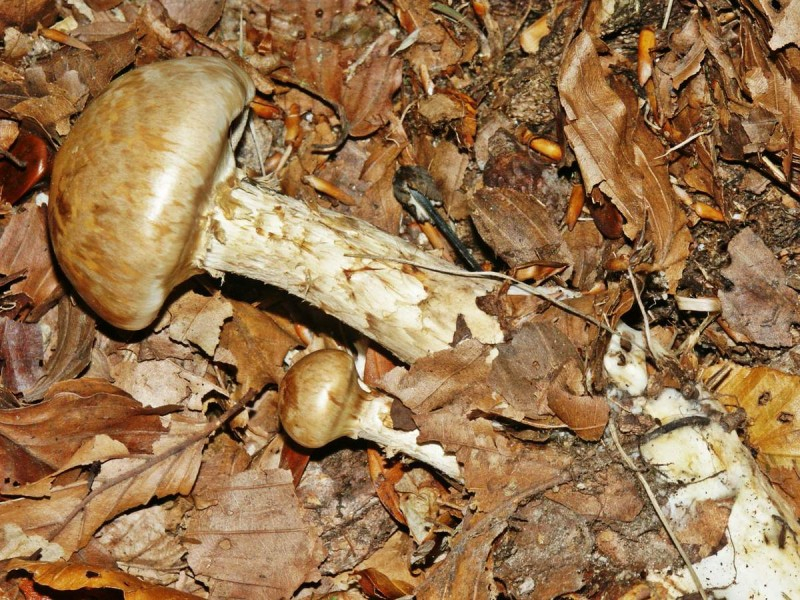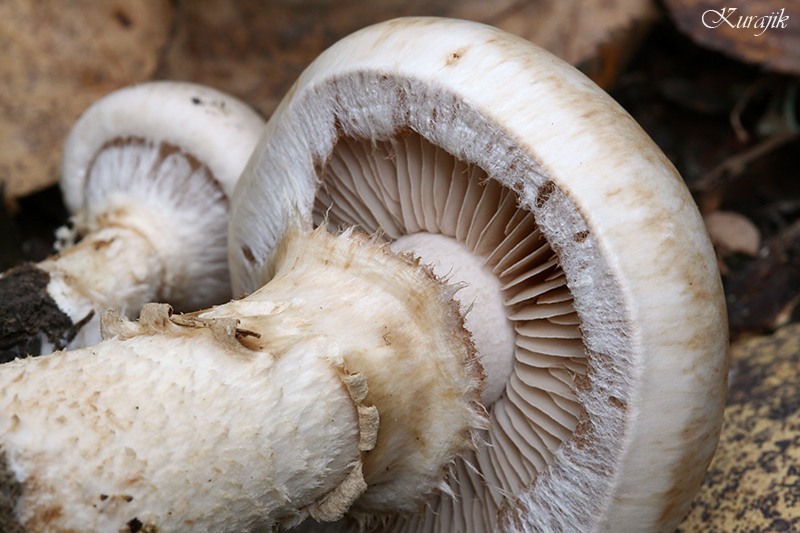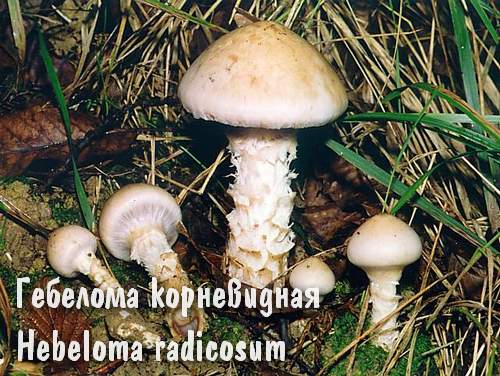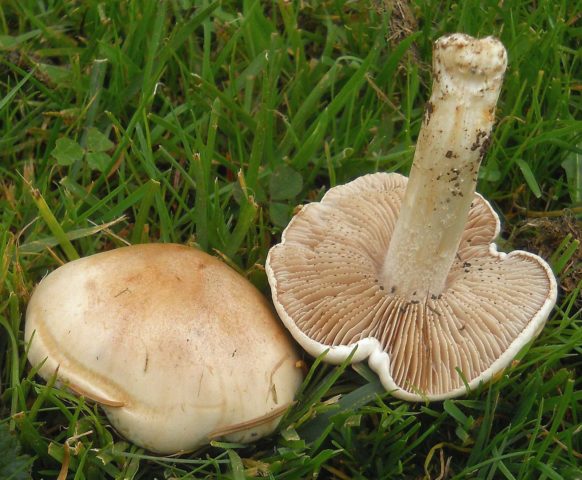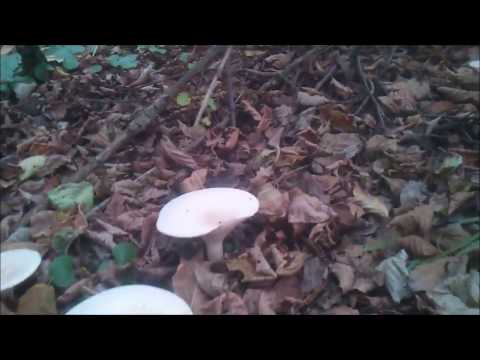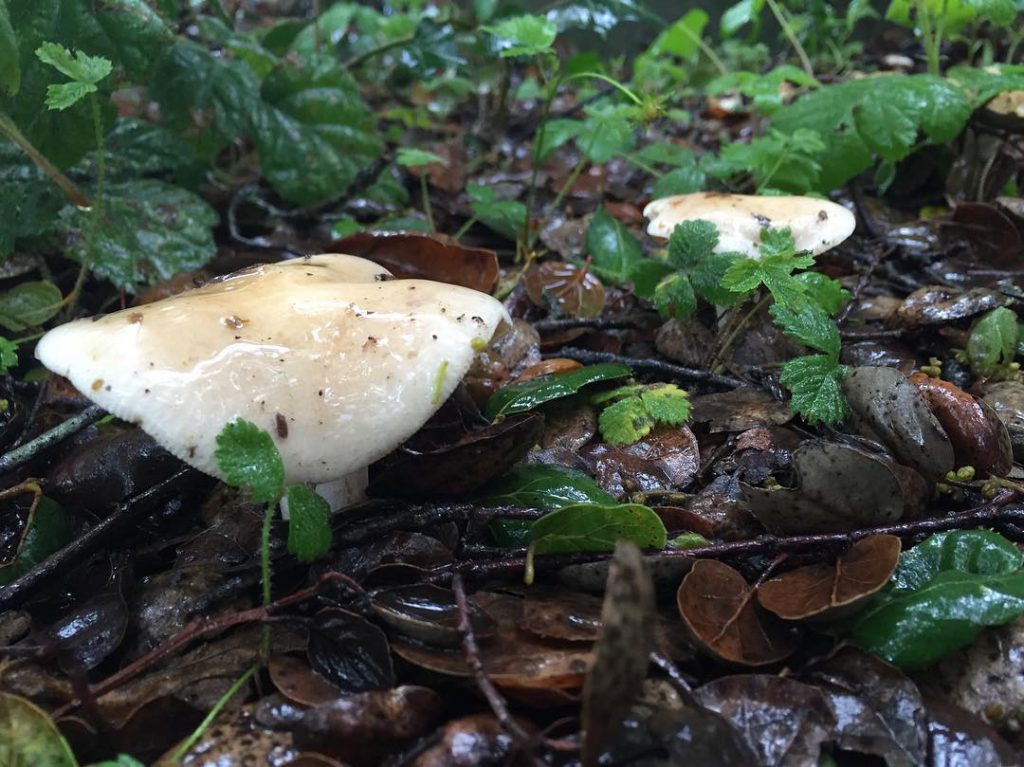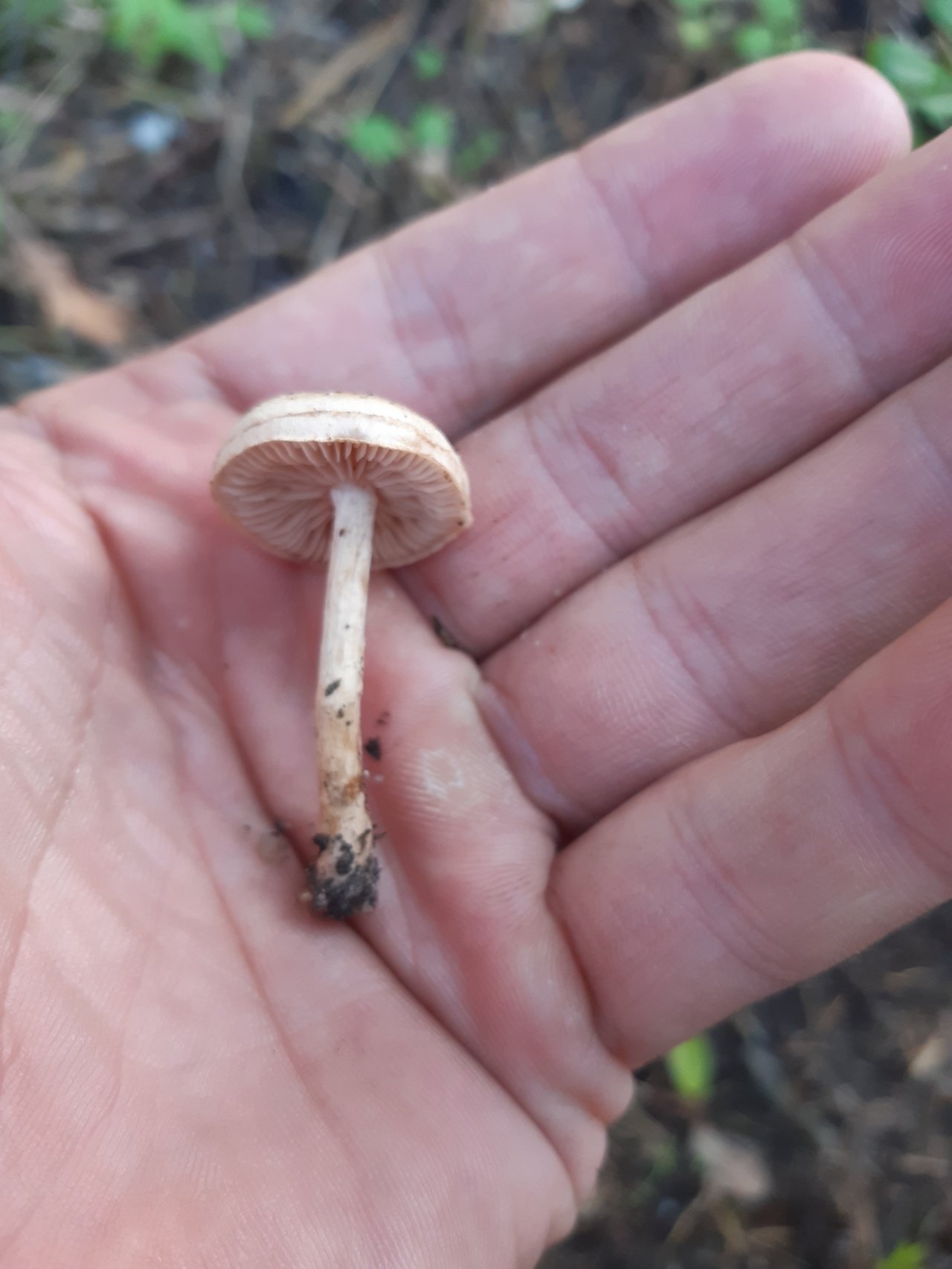Species differences
The genus Gebelome includes several dozen species. The most common of them on the territory of Russia are the types: sticky, mustard, root, inaccessible, belted and coal-loving.
Hebeloma sticky
Mushrooms of this species are the most common gebelomas in our country. Russian mushroom pickers call them "horseradish mushrooms" or false values, and in England they are called "fairy cake" or "poisonous cake". They are referred to as inedible, and in some literary sources - to poisonous mushrooms.
False value hats are yellow-brown, sticky in young and dry in mature individuals. The size of the caps of some specimens reaches 10 cm. On the back of the caps in humid weather, moisture accumulates on the plates, which, after drying, gives them a spotty color. The pulp is light brown with a sharp rare odor and bitter taste.
Mushrooms of a sticky species grow in groups on forest edges, glades, along roads. Distributed throughout the European part of Russia, in the Far East, in Central Asia.
Mustard Hebeloma
It is a poisonous species of Gebelom. Their name comes from the fact that when ripe, the plates on the back of the caps acquire a mustard color.
Their caps have wavy edges. In size, they can reach 15 cm. The color of the caps varies from cream to brown-red, while the edges are colored lighter than the center. The spore powder has a bright orange color.
The legs are hollow inside; on a longitudinal section in their upper part, you can see the connection between the cavities inside the cap and the leg. The legs are covered with scales in such a way that they create a ring pattern on them.
Coniferous and deciduous forests are a favorite growing place for mustard gebelom. They grow in numerous groups.
Root Gebeloma (tapered)
These representatives of the Gebelom genus are conditionally edible: some cooks cook them together with edible mushrooms. The legs of the root gebelom are half submerged in the soil, creating a semblance of a root. Because of this feature, mushrooms of the root species got their name.
Their caps are large (up to 15 cm in diameter), hemispherical, light brown in color. The surface of the cap is covered with darker scales, resulting in a pockmarked appearance. The plates are semi-adherent, colored in different shades of gray and brown, while in young specimens they are lighter than in mature ones. The pulp is dense, light, has a bitter taste and an almond smell.
They love to grow in deciduous forests, because they form mycorrhiza with deciduous trees. Most often they can be found in places with a bald topsoil: in pits, ditches, near burrows.
Gebeloma inaccessible
It is a poisonous mushroom. Has a hat with a diameter of 4 to 8 cm with an indentation in the center. The surface of the cap is slimy, reddish in color, with a wavy edge. The plates are wide, with light margins. The pulp has a bitter taste and a pronounced radish smell. The leg is covered with scales, thickened at the base.
They grow on moist soils of coniferous, deciduous and mixed forests, abandoned gardens, rarely visited corners of parks and squares. Ripen in August-September.
Gebeloma belted
Mushrooms of this species got their name due to the pronounced brown belt on the leg. This belt is formed by a private veil that envelops the cap and the upper part of the leg of young specimens, while in mature specimens it remains only in the form of a ring on the leg and scraps along the edge of the cap.
Belted hebelomas are inedible but not poisonous fungi. The sizes of mushrooms do not exceed 8-9 cm. Their caps come in different shapes: from conical to flat with a tubercle in the center. The surface of the caps is chestnut brown with light edges. The plates are pinkish brown. The pulp is light brown, with a radish scent.
The leg of a girded hebeloma is straight or curved, expands towards the base, has white flesh on the cut, and brown at the base.
Coal-loving Gebeloma
These are poisonous mushrooms. It is called coal-loving because it grows on the sites of former fires and bonfires. These are small mushrooms, with a cap diameter of no more than 2 cm. Its shape changes as the mushroom matures from domed to flat. The surface of the cap is mucous to the touch, colored yellow. The plates are brown, and the spore powder is bright brown.
The leg is thin, thickened towards the base, covered with a bloom of light red color. The pulp of the mushroom is white, without an unpleasant odor, but with a bitter taste.
Distribution and fruiting season
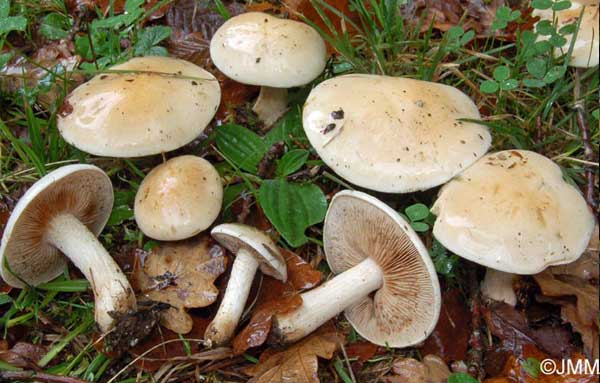
Horseradish mushroom or sticky gebeloma is found both in deciduous and coniferous forests, on forest edges, meadows, meadows, fields, in gardens, along roadsides. Most often it can be found in the area of the northern temperate climatic zone, it is widespread in the European and Far Eastern parts of our country. It also grows in Central Asia and the Caucasus, in Australia.
Hebeloma of this species usually grows in groups or rings, best of all forms mycorrhiza with the roots of oak, aspen, birch. The fruiting season begins in summer and lasts until November, and where winters are mild and relatively warm, it occurs in the colder season.
Gebeloma poisoning
The severity of signs of poisoning with poisonous gebelomas depends on the initial state of health of the patient, the amount of mushrooms eaten, and consumption simultaneously with alcohol, narcotic or potent drugs.
Poisoning of moderate severity is characterized by symptoms:
- nausea;
- vomiting;
- abdominal pain;
- diarrhea;
- an increase in body temperature to subfebrile numbers (reactive fever);
- dizziness;
- visual disorders (loss of visual fields, decreased acuity);
- blanching of the skin with blueness of the lips and fingertips;
- increased heart rate or heart rhythm disturbances;
- a drop in blood pressure;
- severe weakness.
If a small amount of Gebel is eaten, then the patient's condition may improve on its own in 2-3 days.
In more severe cases, urgent medical attention and hospitalization are required.
First aid
If there is information about the consumption of mushrooms of unknown origin (self-collected, acquired in spontaneous markets), the appearance of the first signs of poisoning (nausea and vomiting) allows one to suspect human poisoning with poisonous mushrooms.
In order not to waste precious time, you must:
- Call an ambulance immediately.
- Induce vomiting in the patient and rinse his stomach.
- Give any intestinal absorbent (activated carbon, "Smecta") to take.
- Give (if possible) a cleansing enema to the affected person.
- Save leftover mushrooms or food prepared from them.
- If there are no residues, it is necessary to collect the patient's vomit in a clean container or plastic bag.
Description
Other names for Gebeloma klekoy: Gebeloma crusty, Horseradish mushroom, False value. Latin name - Hebeloma crustuliniforme. Belongs to the Webinnikov family.
Hat
The mushroom cap is in diameter from 3 to 10 cm. When the fruiting body is small, its shape is often convex and neat, and the edges look tucked up. In the old specimen, the cap becomes dense and bends inward. It is yellow, sometimes yellowish-brown, sometimes red. The surface of the caps in young fruiting bodies is smooth, but slimy, and in adulthood it is smooth, dry and shiny.
Hymenophore
In a young false Valui, the hymenophore is whitish-fawn, consists of gray or white adherent and often located notched plates with uneven edges.
In mature hebeloma, the plates, and, consequently, the hymenophores, are brown-yellow; drops of liquid are visible on them, which dry out in dry weather and become brown or almost black.
Pulp
The flesh in young gebelom is white, in mature it is darker, thicker and friable. It has an unpleasant bitter taste and a nasty smell, similar to the smell of a radish, it is because of this that it got its offensive name "horseradish mushroom".
Leg
The height of the leg is from three to ten centimeters, the diameter is from 1 to 2.5 cm, cylindrical in shape. Flaky-scaly, whitish in a young mushroom, solid, then becomes yellowish and hollow inside, thickened towards the base.
conclusions
Gebelomas are fungi that grow everywhere in our country. This genus of mushrooms is represented by many species, among which there are conditionally edible, inedible and poisonous specimens. Their species difference is insignificant, so there is no point in hoping for knowledge of the morphological features of different species.
The best materials of the month
- Why you can't go on a diet on your own
- How to keep vegetables and fruits fresh: simple tricks
- How to beat your sugar cravings: 7 unexpected foods
- Scientists say youth can be prolonged
During their collection, mushroom pickers need to be very careful. Unknown mushrooms or those of their representatives, the edibility of which is in doubt, is categorically impossible.
Poisonous mushrooms contain neurotoxic toxic substances that are dangerous to human life.
The use of poisonous gebel can cause poisoning with the development of acute failure of various internal organs.
Therefore, if you suspect poisoning with gebelomas, the victim should immediately be provided with first aid, which consists in washing the stomach and cleaning the intestines. The faster primary care is provided to the patient, the better the prognosis.
More fresh and relevant health information on our Telegram channel. Subscribe: https://t.me/foodandhealthru
We will be grateful if you use the buttons:




